In the crowded advertising landscape, standing out from the competition is essential for capturing the attention of your target audience. One powerful and often overlooked method of creating a memorable brand experience is through the use of custom jingles.
Sonic branding, the strategic use of sound and music to convey brand identity and leave a lasting impression, has the potential to create emotional connections that resonate with your audience long after they hear your advertisement.
With over two decades of experience in radio production and jingle creation, Killerspots Agency has helped clients worldwide leverage the power of sonic branding to differentiate themselves in the marketplace and boost their brand recognition.
In this blog post, we will discuss the numerous benefits of utilizing custom jingles for your brand and share insights on how to create captivating jingles with the help of a professional jingle production agency.
1. The Impact of Sonic Branding on Audience Engagement
Sonic branding, achieved through custom jingles, offers several unique benefits that can increase audience engagement and brand recognition:
– Memorable Experience: Custom jingles are known for their catchy tunes and lyrics that stick in the minds of listeners, creating a memorable brand experience that can last long after the advertisement has ended.
– Emotional Connection: Music has the power to evoke emotions and foster connections with your audience. A well-crafted jingle can establish an emotional bond between your brand and its target audience, highlighting positive experiences that create a sense of loyalty.
– Brand Differentiation: A custom jingle can distinguish your brand from competitors by providing a unique, identifiable sound that sets you apart in a crowded marketplace.
– Reinforce Message: Custom jingles can be designed to compliment your brand’s messaging, using lyrics and melody to reinforce your unique selling points and further solidify your brand identity.
2. The Process of Creating a Custom Jingle
Developing an effective custom jingle for your brand involves several key steps:
– Define Objectives: Clearly outline your goals for the custom jingle, considering factors such as audience demographics, desired emotional responses, brand personality, and key messaging.
– Collaborate with a Jingle Production Agency: Partner with a professional jingle production agency that has experience in creating custom jingles for businesses in your industry and understands your unique objectives.
– Develop the Musical Concept: Work closely with your jingle production agency to develop a musical concept that aligns with your brand’s personality and messaging. Consider aspects such as melody, instrumentation, and genre.
– Write Lyrics: Craft lyrics that communicate your brand message and resonate with your target audience. The lyrics should be catchy, easy to remember, and reflective of your brand’s identity.
– Record Your Custom Jingle: Once the musical concept and lyrics are finalized, proceed with recording your custom jingle using professional musicians and vocalists, ensuring the highest quality production.
3. Tips for Collaborating with a Jingle Production Agency
To ensure a successful partnership with a jingle production agency, keep the following tips in mind:
– Communicate Clear Expectations: Share a detailed brief outlining your objectives, brand personality, target audience, and any specific requirements to help the production agency understand your vision.
– Review Samples of Work: Request sample jingles and references from the agency, ensuring they have a proven track record of successful custom jingle creation.
– Maintain Open Communication: Establish regular communication with the production agency throughout the creative process to provide feedback, monitor progress, and ensure that your vision is being accurately captured.
– Trust their Expertise: A skilled jingle production agency brings professional expertise and creativity to the project, so be open to their suggestions and trust their guidance when it comes to producing a jingle that aligns best with your goals and objectives.
4. Measuring the Success of Your Custom Jingle
Determining the success of your custom jingle involves evaluating several key performance indicators (KPIs):
– Brand Recall: Measure how well your target audience can recall your brand after hearing your custom jingle by conducting surveys, polls, or focus groups.
– Audience Engagement: Monitor metrics such as social media shares, website traffic, and ad interactions to gauge the level of engagement your custom jingle generates among your target audience.
– Conversion Rates: Evaluate the impact of your custom jingle on specific marketing objectives, such as lead generation, sales, or new customer acquisition.
– Customer Feedback: Collect customer feedback on your custom jingle to gauge how well it resonates with your target audience and incorporates their suggestions for improvement where necessary.
Final Thoughts
Incorporating custom jingles into your marketing strategy can significantly enhance your brand recognition and create memorable experiences that resonate with your audience. By partnering with a professional jingle production agency, you can harness the power of sonic branding to elevate your brand’s market presence and forge strong connections with your target audience.
If you’re ready to explore the possibilities of custom jingle production for businesses, the expert team at Killerspots Agency is here to help. Contact us to discuss your unique objectives and begin the exciting journey of creating a distinctive, memorable jingle that enhances your brand’s impact, reach, and success!




















